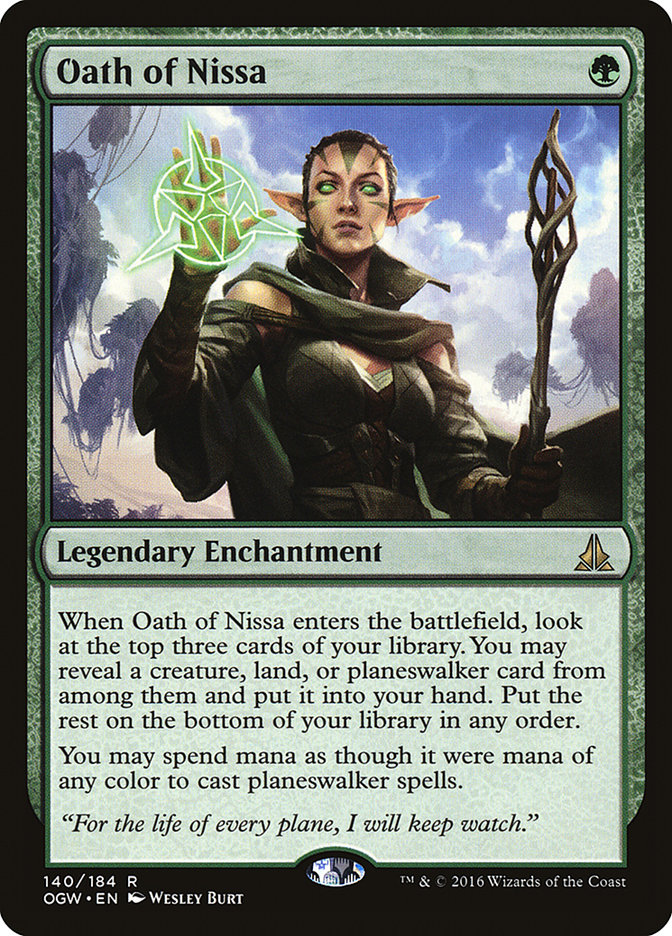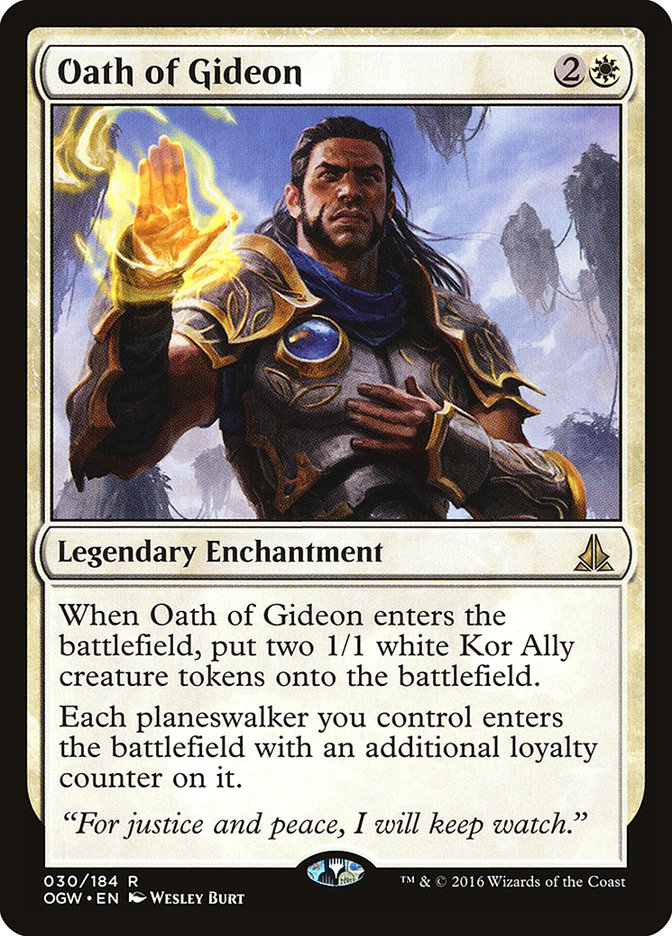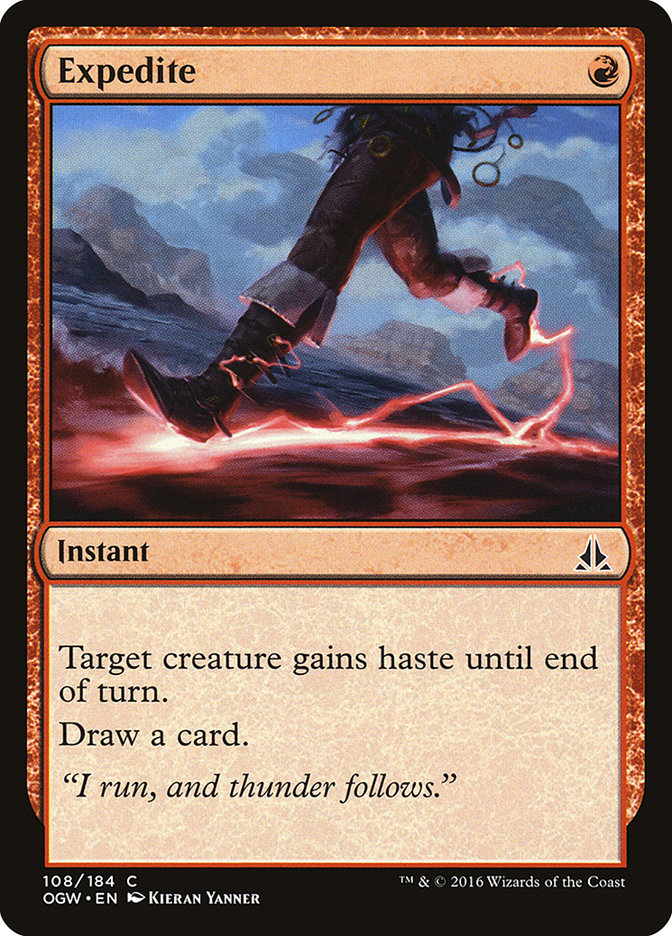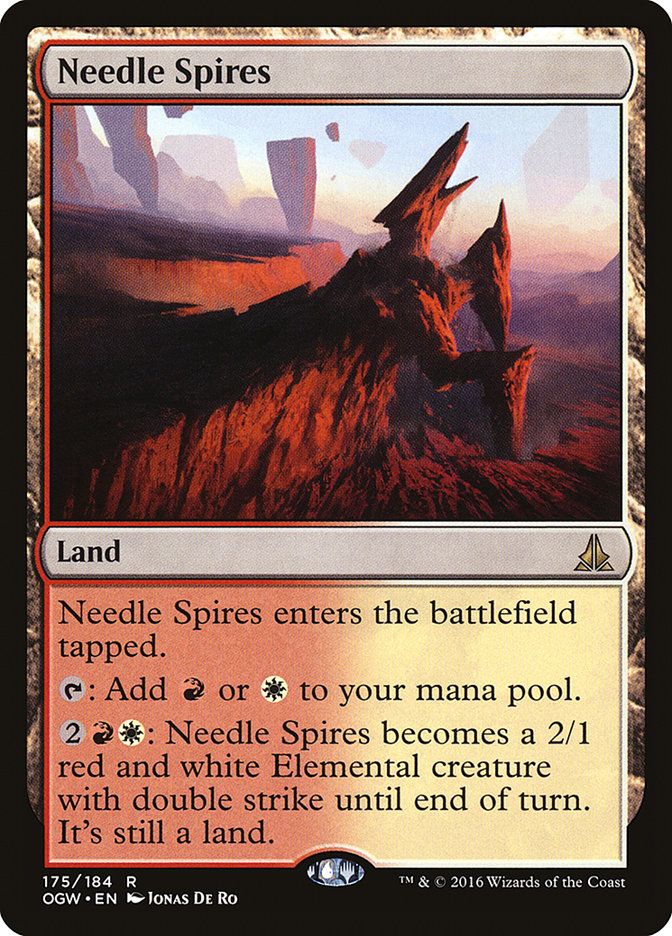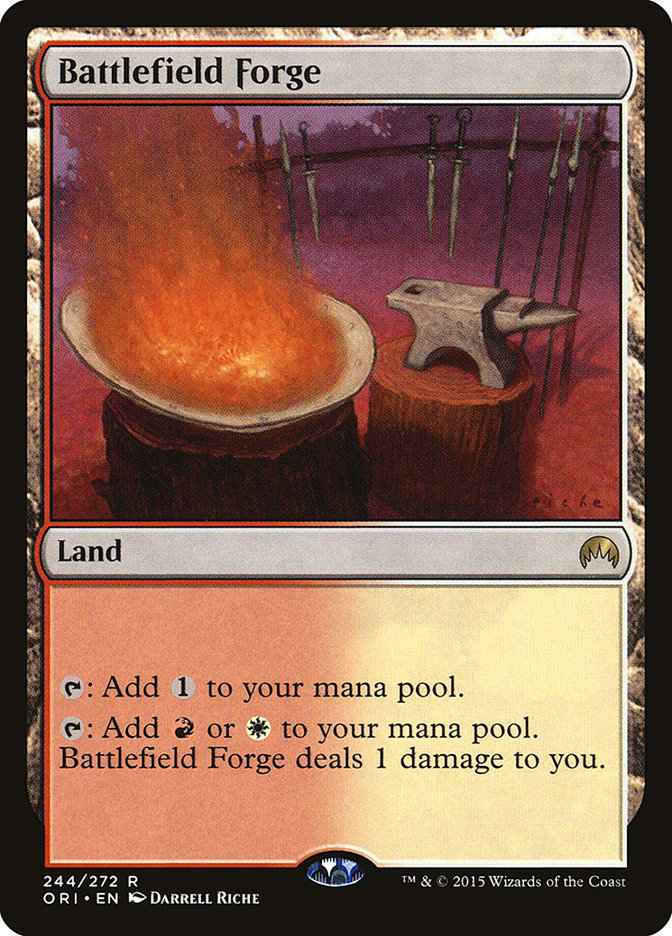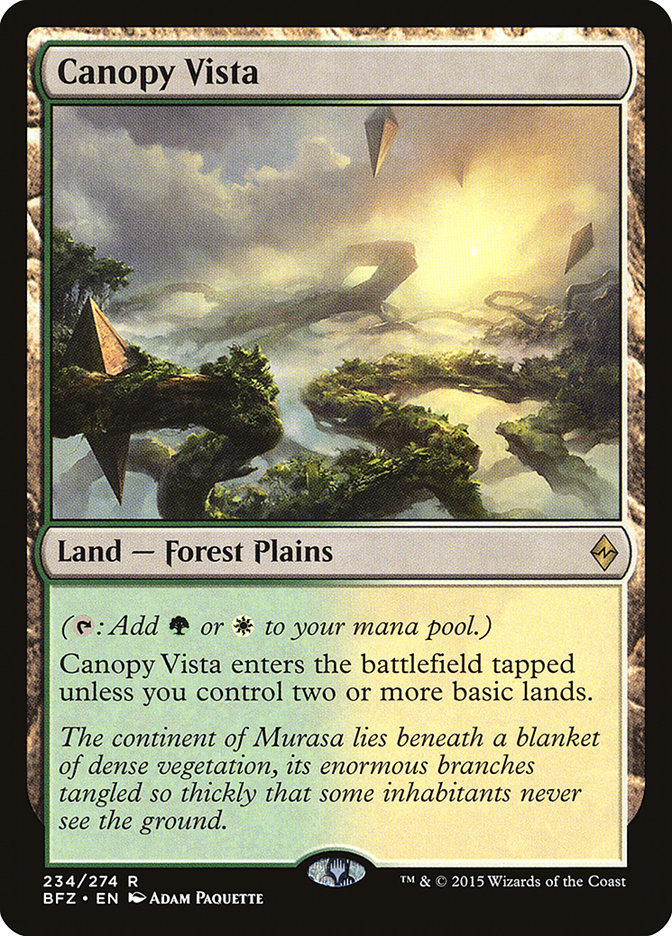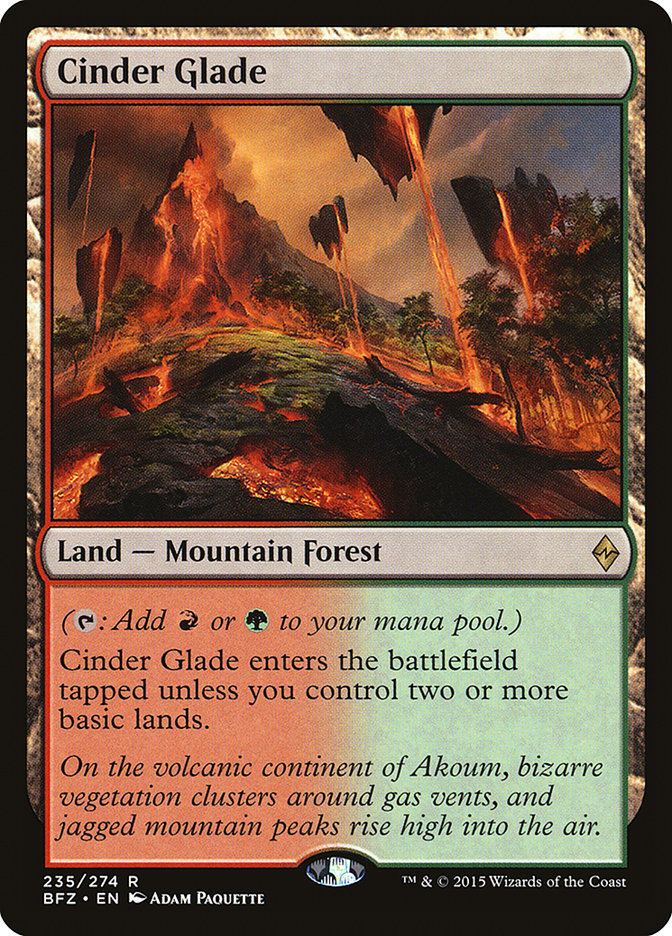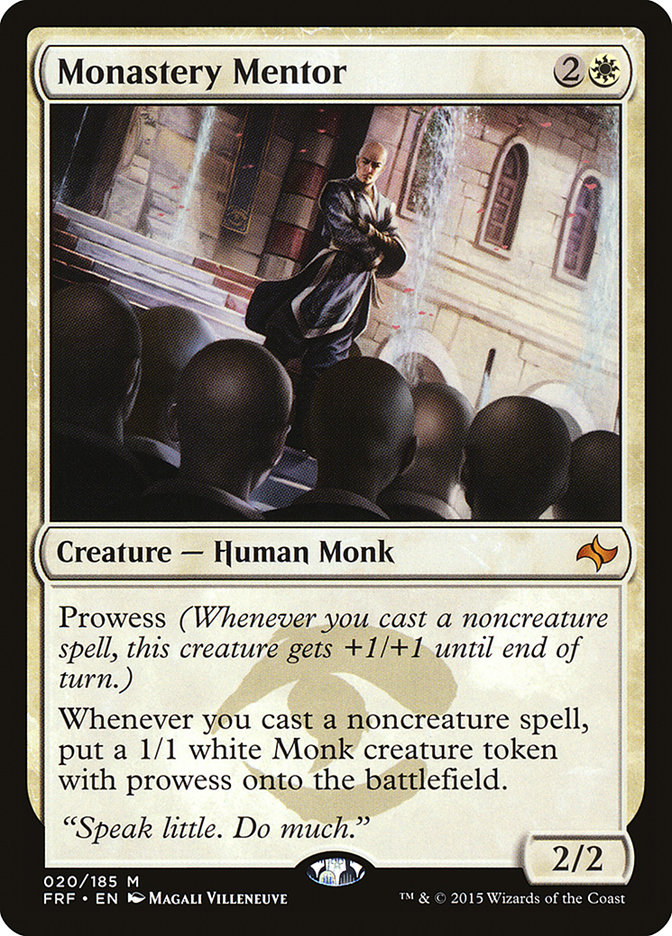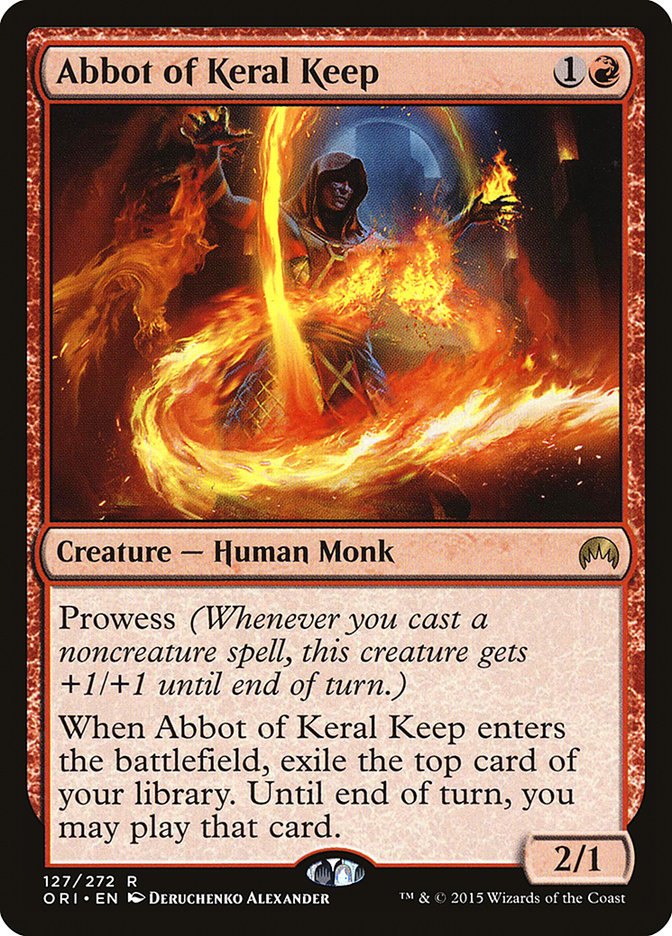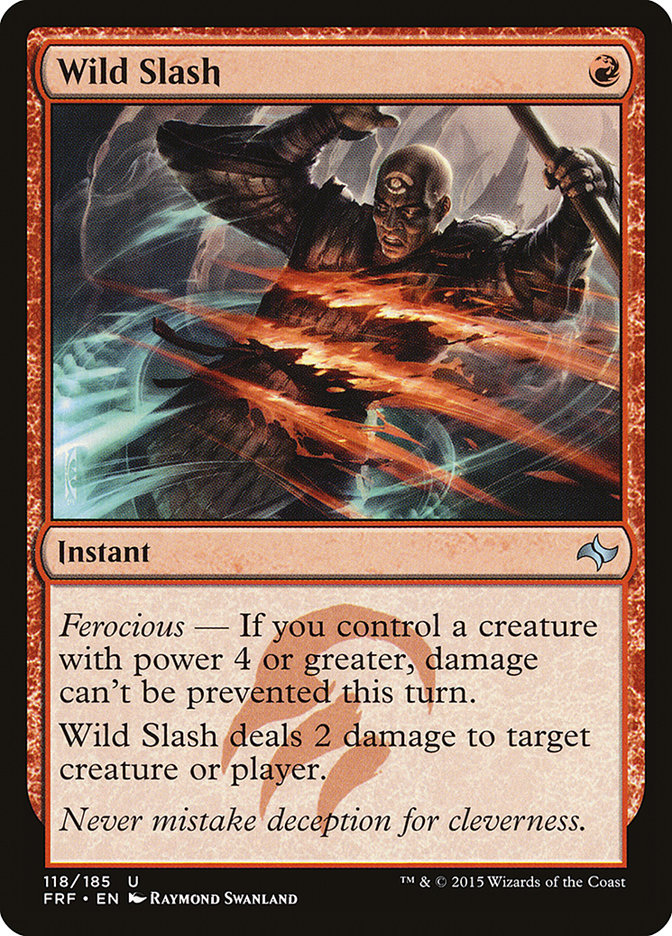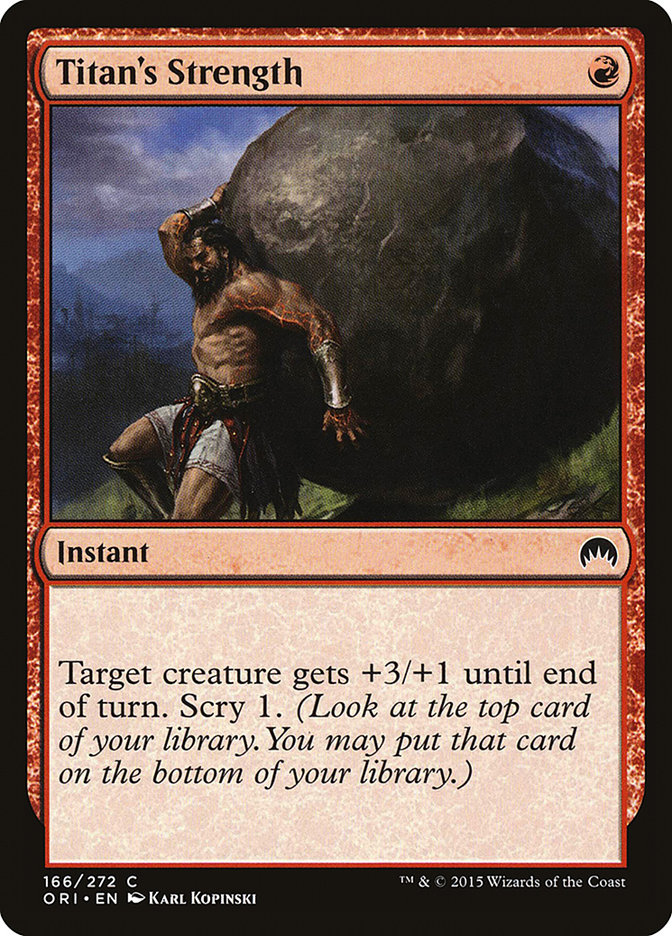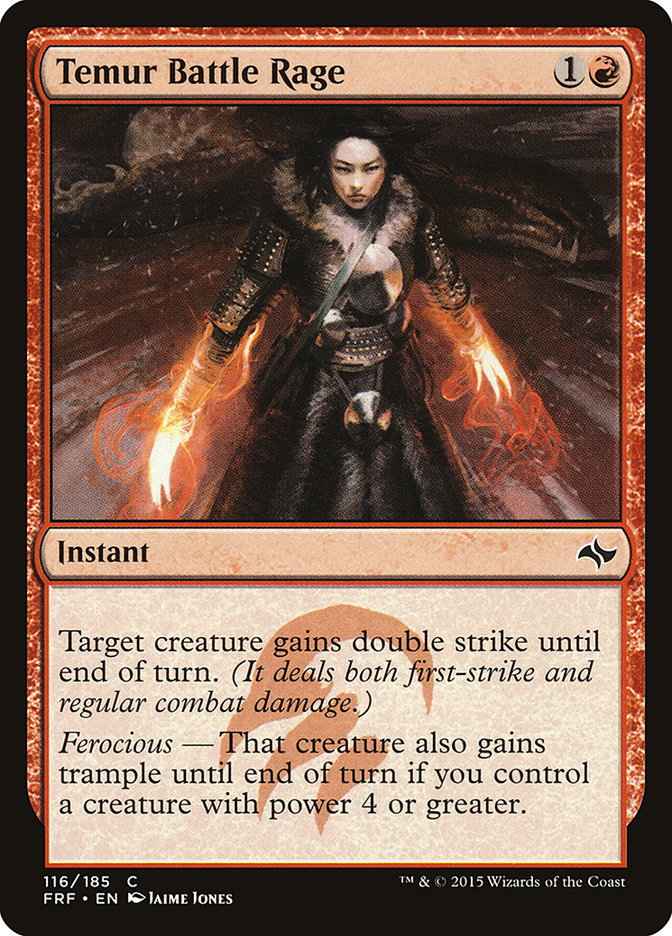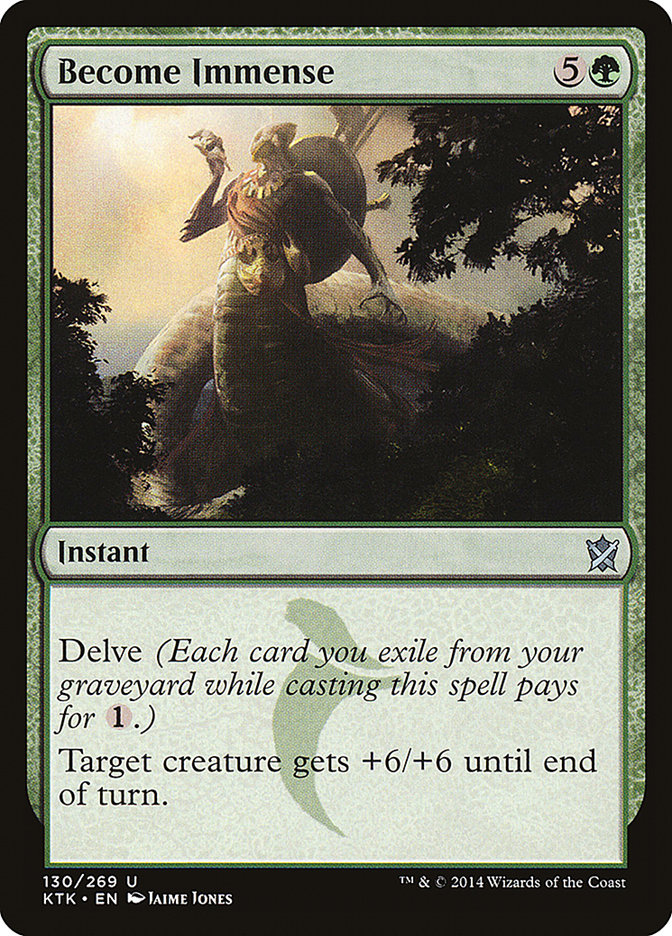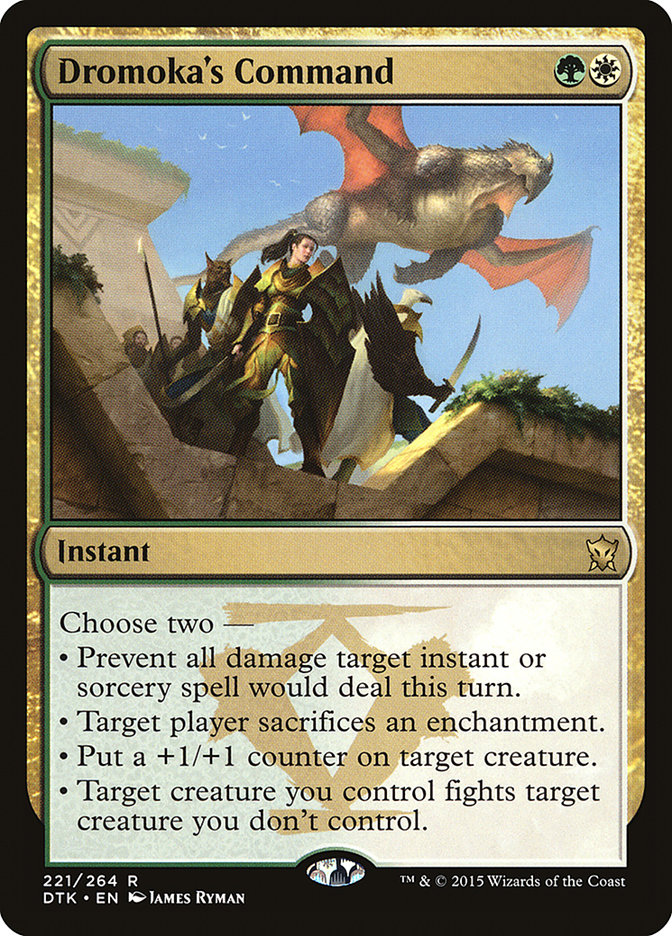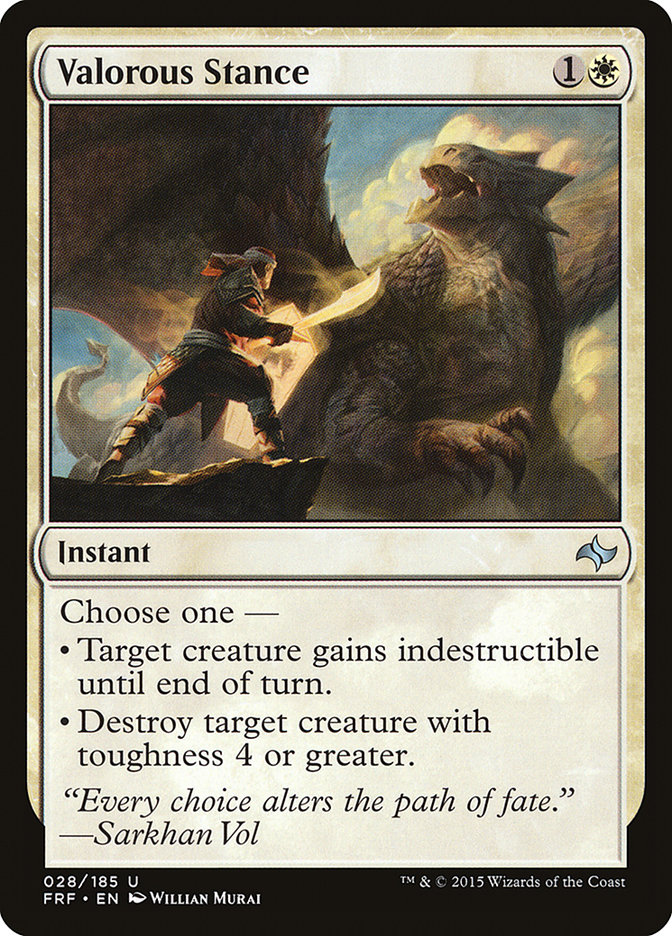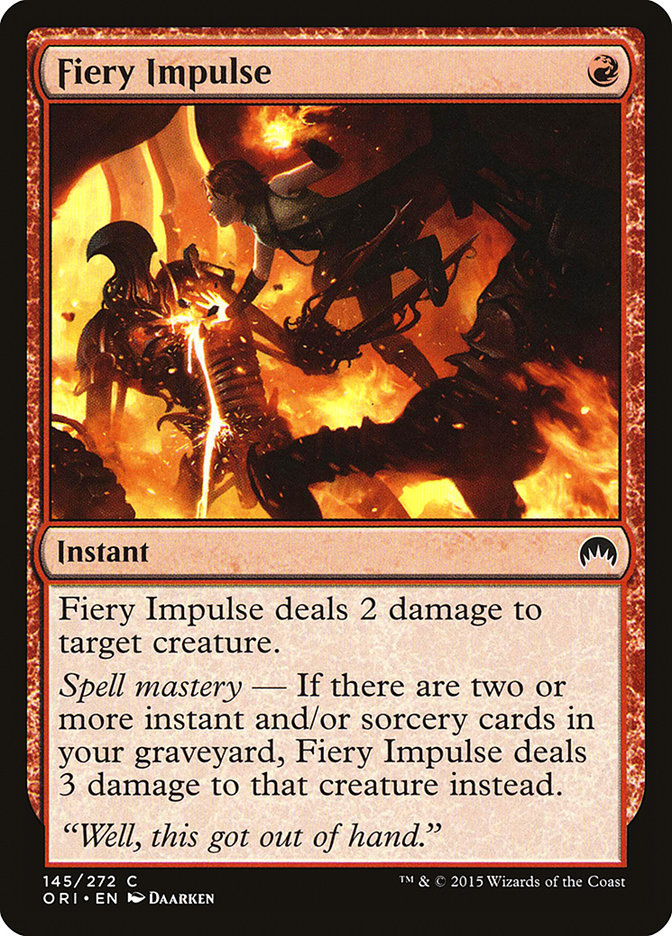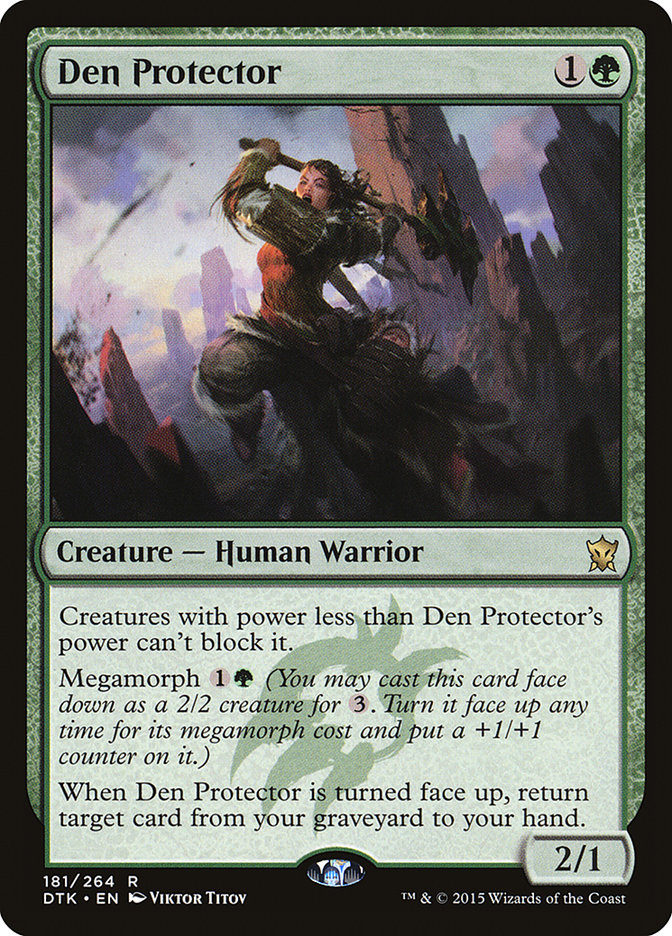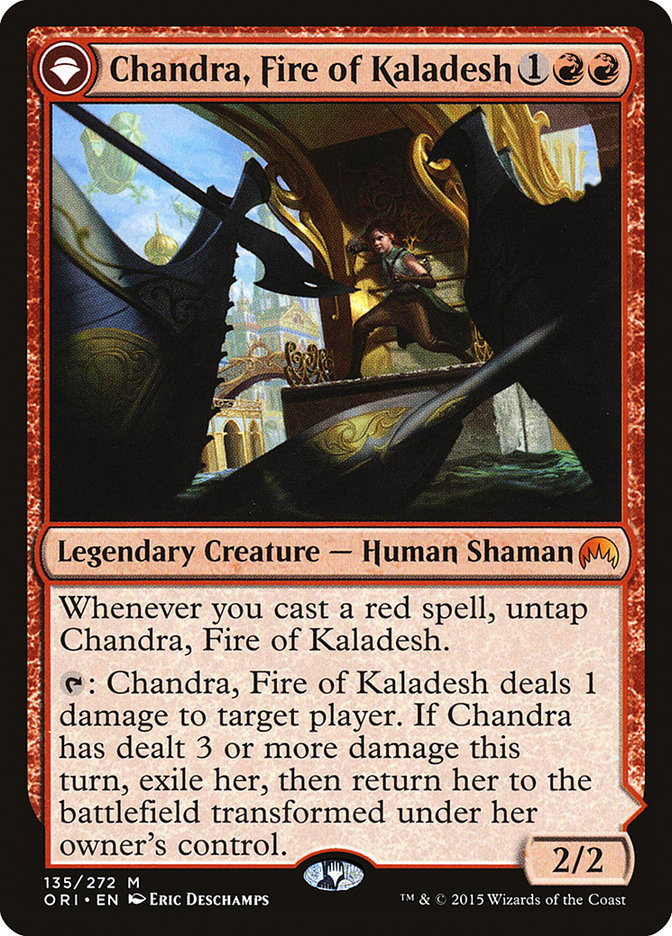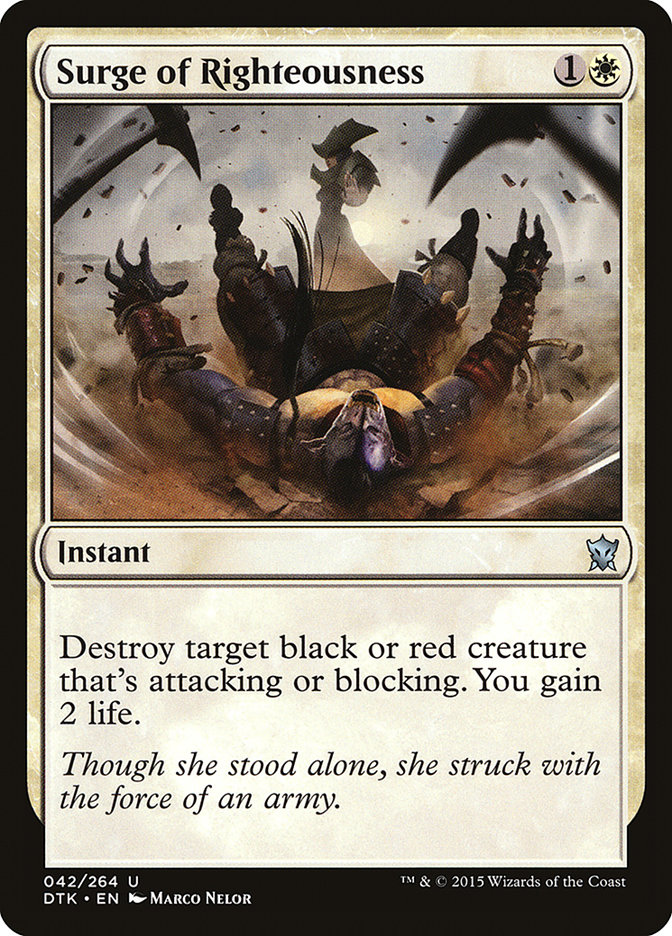Oath of the Gatewatch spoilers are out and this weekend’s prerelease will be everyone’s first opportunity to get their hands on the new set. Completely new decks will be born, including heavy Eldrazi strategies that aren’t necessarily ramp, and planeswalker-heavy decks featuring the new Oath cycle.
Other decks will take a few cards from Oath of the Gatewatch to improve already existing archetypes. Today I’ll be talking about a deck that really interests me and was previously only lacking a couple of pieces to its puzzle.
Creatures (16)
Lands (24)
Spells (21)

R/W Prowess was already close to being a playable deck. Certainly the mana fixing could’ve been bridged together with Wind-Scarred Crag, but we’d like a little more from our lands that just one measly life. Needle Spires adds late-game value to smooth the deck out if you draw too many lands. It’s even great with the pump spells like Titan’s Strength and Become Immense. It’s nice to be able to hit your opponent for a possible sixteen damage from no cards in hand and no non-land permanents in play.
Expedite alongside Defiant Strike bring the deck’s cantrip number up to where you want the deck to be. You want to cast a steady stream of spells to trigger Prowess, but you don’t want to run out of gas while doing so. Expedite also works nicely with Seeker of the Way, Monastery Mentor, and especially when it’s flipped off of an Abbot of Keral Keep to replace itself, add to the board, and attack for three.
After that brief introduction of the new cards, let’s go down the list to really see what makes the deck tick.
The Mana
Naya Prowess is basically a R/W deck that gets a free green splash along the way. Wooded Foothills and Windswept Heath can get white or red mana once the Battle lands of Canopy Vista and Cinder Glade are in the mix. At that point you already have ten green sources, so why not play some green cards? Bloodstained Mire gives extra red and green sources, bumping the green sources to twelve, which is plenty for only three green cards in the maindeck. Since Monastery Swiftspear wants to come down on turn 1 and many of your cheap spells are red, the deck leans more towards red sources than white, having twenty and seventeen, respectively.
Having four Battlefield Forge is pretty key for the deck, even though it can get in the way of a Battle land entering the battlefield untapped. Many curves want to start with a Monastery Swiftspear on one and then to have the option to cycle a Defiant Strike on two while playing a land that enters the battlefield tapped, like Needle Spires or a Battle land. You’ll be the aggressor in most matchups so the life points will rarely matter. You also play four Seeker of the Way to recoup life, and they hit very hard in this deck.
There are just five basic lands total: three Mountain and two Plains. Notably there’s not a basic Forest in the deck. With only three maindeck green spells, it’s a liability because you need specially a lot of white and red mana when you’re casting a bunch of spells at once.
Needle Spires is the land the deck sorely wanted all along. Double strike is very potent when it threatens to deal double-digit damage out of nowhere. It does take four mana to activate, which is a tad higher than I’d like, but by the time you’ve exhausted your resources you’ll be glad you have it. Just don’t could on it as your turn 5 play.
The Creatures
Monastery Swiftspear starts the beats as early as the first turn and is very difficult to block properly, since it comes down before your opponent can set up reasonable blockers. It’s a natural haste creature that can be plucked off the top of your deck when you’re sitting on just a bunch of pump spells. The opponent is never safe when you have haste creatures in your deck.
Seeker of the Way is very hard to race and serves as the perfect two-drop for the deck. All things else being equal, it will be your primary target for cards like Titan’s Strength and Defiant Strike, since even though you may not one shot the opponent you’ll be gaining so much life that you’re at low-risk of dying yourself. Seeker of the Way is exposed to the same cards that Monastery Mentor would be (Self-Inflicted Wound, Wild Slash, Silkwrap), making it really tough for them to save a removal spell for Monastery Mentor and often clearing the path for it.
Monastery Mentor is a huge beating in this deck and serves as a means to “go wide” when necessary without committing to dedicated token makers like Dragon Fodder or Hordeling Outburst. Most of the time I still cast Monastery Mentor on the third turn and risk it dying because the upside of untapping with it is so huge. If you have a second copy, 100% cast the first. If you have no other action going on and a bunch of cantrips, you can wait until you have an open mana to cycle a cantrip and get a Monk token. Overall, Monastery Mentor is simply a great card that has been seeing play in a variety of decks and shines even more in Naya Prowess.
Abbot of Keral Keep is only cast as a two-drop if you absolutely have to. The most common example is that you don’t have another turn-two play (even a Monastery Swiftspear will do). If you’re Abbot flooded it’s sometimes okay to jam the first as well. For the most part you want Abbot of Keral Keep to be your third-turn play before you play a third land. This gives you a chance to reveal a land off the top and a reasonable chance to hit a one-mana spell. Try to leave yourself with a Battlefield Forge in hand, or a fetchland if you already have two basic lands in play, so that you’re able to cast Defiant Strike or a red one-mana spell that flipped. This line can miss by revealing a two-drop, Monastery Mentor, or a Become Immense, but the risk is worth taking in this spot. Abbot gets even better when cast later in the game, when everything in your deck will be a good flip.
The Spells
Wild Slash gets the maindeck nod over Fiery Impulse because you want to be able to cast it at any time to get value out of your Prowess creatures, most importantly Monastery Mentor. Most of the time you can resolve your spells and Prowess triggers in such a way to target your own creature and have it survive, but no need to take that chance if you don’t have to. Having a touch of direct damage in the deck isn’t bad either. Sometimes you have to crunch in for sixteen or so because it’s your only good play, putting the opponent at one or two life.
I’m really happy to be casting Defiant Strike again, as it’s been one of my favorite cards in the past year. It messes up combat for such a low cost. Titan’s Strength can be overkill when it’s saving your creature in combat. Expedite serves a similar function in combat to give cheap Prowess. If you don’t really need the +1/+0 boost from Defiant Strike and all of your creatures are prepared to attack anyway, it’s fine to cast these cantrips on an opponent’s creature so that you don’t get two-for-one’d with a removal spell. These cantrips can also help you keep land-light hands if you can count on the opponent casting a creature for you to target. Just make sure you wait until their end step. You don’t want to give one of their creatures haste too early or take an extra one damage.
Titan’s Strength is very good in this deck for a few reasons. It’s good as a cheap spell with Prowess. It works great alongside Temur Battle Rage or on a Needle Spires. It’s a huge boost of life with Seeker of the Way. What I like the most is scrying. With eight cantrips you can immediately draw the card on top if you need it. If it’s a Temur Battle Rage or Become Immense, that information pays off immediately.
Temur Battle Rage and Become Immense show up to give a burst-kill that your opponents must respect. Two of each may seem low to those familiar with Atarka Red, but with all the card draw you see a larger portion of your deck than before. You also lower your risk of drawing redundant multiples when you’re playing only two copies of each. The deck pressures the opponent better naturally too, leaving them without the luxury of leaving up their Murderous Cut mana or what have you.
The one Dromoka’s Command is just because the deck can afford to play one of that effect. Your creatures can get quite large fast, big enough to take down things like Anafenza, the Foremost and Siege Rhino. The first piece of enchantment removal can be good too, depending on how played Silkwrap or the new Oaths will be. More copies show up in the sideboard in case they do.
The Sideboard
Without Soulfire Grand Master but with access to white mana, Valorous Stance gets the nod over Roast as the way to kill big toughness creatures out of Abzan. It doesn’t hit Jace, Vryn’s Prodigy, but we have that covered with Wild Slash and possible Fiery Impulse. After sideboarding people will try to disrupt your combo too, and giving your creature indestructible could throw them for a loop.
Fiery Impulse is there against other small creature strategies or as an upgrade to Wild Slash when there are a relevant number of three-toughness creatures to kill. Notables are Shambling Vent, Warden of the First Tree, Catacomb Sifter, and Mantis Rider. Don’t go too far loading up on removal if you don’t have to, as it waters down the synergistic nature of the deck.
Den Protector comes in when your opponent wants to grind you into the dust or when they plan on blocking with sticky creatures like a Hangarback Walker. Pump spells work nicely to boost Den Protector’s power higher than the opposition, letting it go through unimpeded. It’s also not a bad two-drop play if you get a mana draw that allows it.
Chandra, Fire of Kaladesh is one of my favorite cards in the Atarka Red deck and looks to be just as good here. Expedite is a red spell that replaces itself, which adds to the frequency with which Chandra gets to flip. I like Chandra against the Rally the Ancestors deck and other removal-light decks as a way to attack them from another axis.
Surge of Righteousness comes in against Atarka Red and other red or black strategies like R/B Dragons. I like Surge of Righteousness in small numbers against Jeskai Black if they have Mantis Rider and against Abzan if they have Tasigur, the Golden Fang. Don’t bring this in against the Devoid decks that might show up. Even though they have black in their casting costs, they are colorless and unaffected by Surge of Righteousness.
Conclusion
Naya Prowess is just my kind of deck. It plays a little like Infect, a little like Mono-Red, and a little like Heroic. In fact, I could see putting in a few protection spells if they deck wants to be heavy on creating one huge creature. Center Soul pops to mind as Rebound triggers Prowess twice. It’s a touch slower than something like Atarka Red but plays much better cards and has a much better late game.
Currently Naya Prowess is at the top of my list for decks to play week one of Standard at #SCGATL. It’s right up my alley and I’ll be tuning to find the best version of it.
Also, it wins really quickly.

